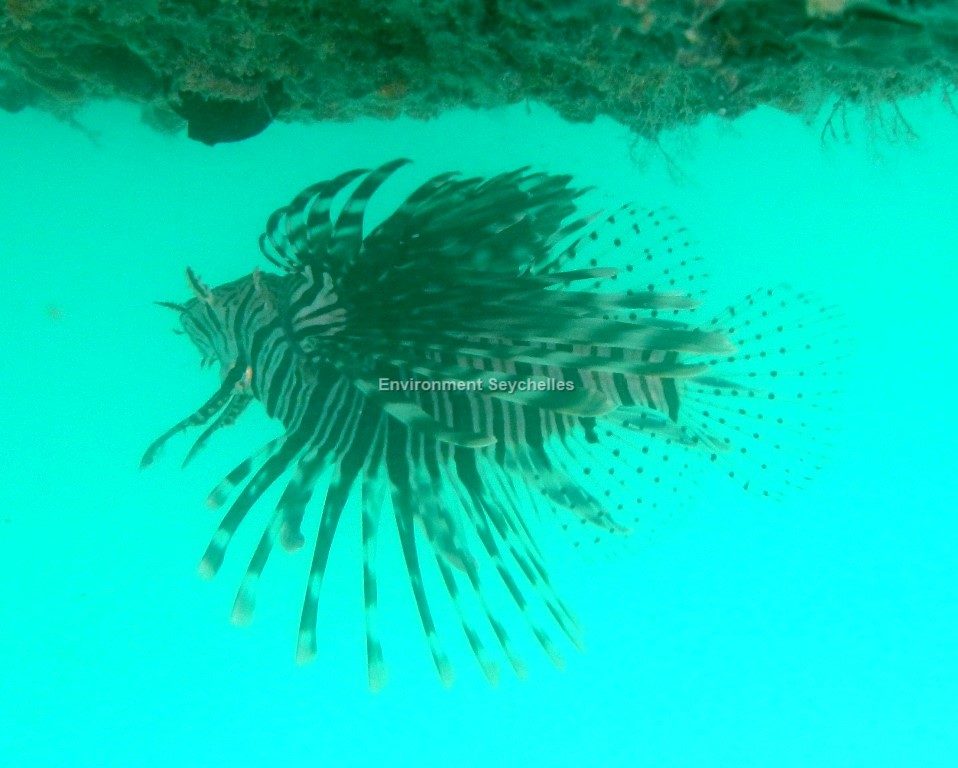Description:
Dorsal spines: 13; Dorsal rays: 9-11; Anal spines: 3; Anal rays: 6-7.
Reddish to tan or grey in colour, with numerous thin dark bars on body and head; tentacle above eye may be faintly banded. Adults have a band of small spines along the cheek and small spots in the median fins.
Size:
Maturity: Lm unknown. Range unknown. Max Length: 35cm SL.
Habitat and Ecology:
Inhabits coral reefs and rocky areas and sandy or seagrass bottoms near rocky areas (depth 0-85m). Usually solitary, but occasionally in small groups.
Opportunistic carnivores, primarily eating other fish and crustaceans. Eggs and larvae are pelagic. All non-caudal spines are venomous and potentially lethal to humans.
Fishery Status:
This species is not protected or subject to fishery regulations. It is not caught in the artisanal fishery.
Notes:
Venomous. Do not touch. Fins highly venomous, may cause human death.
References:
Froese, R. & D. Pauly. Eds. 2020. FishBase. Pterois miles. https://www.fishbase.se/summary/Pterois-miles.html (02/04/20).
Motomura, H. & Matsuura, K. 2015. Pterois miles. The IUCN Red List 2015: e.T190475A57243715. https://www.iucnredlist.org/species/190475/57243715 (02/04/20).
Smith, M & Heemstra, P Eds. (1999). Smiths’ Sea Fishes Edition 6. Springer-Verlag Berlin Heidelberg 10.1007/978-3-642-82858-4
Citation:


There are no comments